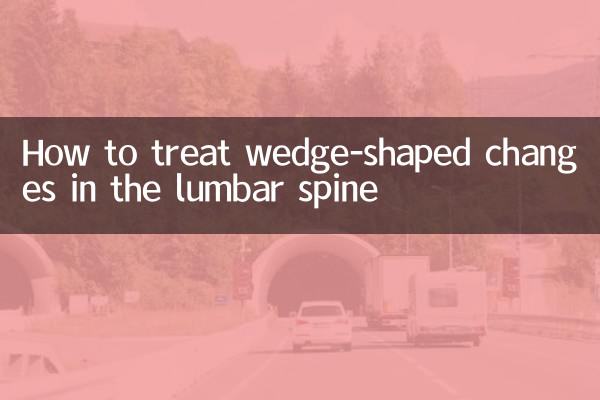How to treat wedge-shaped changes in the lumbar spine
In recent years, wedge-shaped changes in the lumbar spine have become a health problem that plagues many people, especially those who sit for long periods of time, have poor posture, or have osteoporosis. This article will combine the hot topics and hot content on the Internet in the past 10 days to provide you with a detailed analysis of the treatment methods for wedge-shaped changes in the lumbar spine, and provide structured data for reference.
1. What is wedge-shaped change in lumbar spine?

Lumbar wedge change refers to the phenomenon that the height of the front part of the lumbar vertebral body is reduced, forming a wedge-shaped deformation. It can be caused by osteoporosis, trauma, tumors, or long-term poor posture. Patients often present with low back pain, limited mobility, and even affect neurological function in severe cases.
| Common symptoms | Possible reasons | Risk groups |
|---|---|---|
| persistent low back pain | osteoporosis | Middle-aged and elderly people |
| Restricted activities | Trauma or fracture | sedentary person |
| height becomes shorter | Tumor or infection | postmenopausal women |
2. Treatment methods for wedge-shaped changes in the lumbar spine
According to recent medical hotspots, the treatment of lumbar wedge changes mainly includes conservative treatment and surgical treatment. Treatment plans need to be formulated based on the patient's specific circumstances.
| Treatment | Specific measures | Applicable situations |
|---|---|---|
| Conservative treatment | Medication, physical therapy, brace immobilization | mild or moderate disease |
| minimally invasive surgery | Vertebroplasty, kyphoplasty | severe pain or nerve compression |
| open surgery | Vertebral fusion, internal fixation | Severe deformity or instability |
3. Recent hot treatment trends
According to the search data of the entire Internet, the following treatment methods have attracted much attention in the past 10 days:
1.stem cell therapy: Some studies have shown that stem cells may help repair damaged vertebral tissue, but they are still in the clinical trial stage.
2.3D printing technology: The application of personalized 3D printed implants in lumbar spine surgery has become a hot topic, which can more accurately match the patient's anatomy.
3.Artificial Intelligence Assisted Diagnosis: The application of AI technology in lumbar spine image analysis has greatly improved the accuracy of early diagnosis.
4. Prevention and daily care suggestions
Prevention is better than cure. Here are the preventive measures recently recommended by experts:
| Precautions | Specific methods | Effect |
|---|---|---|
| Calcium and Vitamin D | Daily intake of 800-1200mg calcium | Enhance bone density |
| correct posture training | Avoid sitting for long periods of time and maintain a neutral spine position | Reduce vertebral body pressure |
| moderate exercise | Low-impact exercise such as swimming and yoga | Strengthen core muscles |
5. Answers to Frequently Asked Questions by Patients
1.Q: Can wedge-shaped changes in the lumbar spine be cured?
A: Early detection and intervention can effectively control the progression of the disease, but the structural changes that have occurred may not be completely reversed.
2.Q: Do I need to wear the girdle for a long time?
A: Short-term wearing can help stabilize the spine, but long-term dependence may cause muscle atrophy and should be used under the guidance of a doctor.
3.Q: Are the risks of surgery high?
A: Modern minimally invasive techniques have greatly reduced surgical risks, but the pros and cons still need to be weighed based on individual circumstances.
Conclusion
Treatment of wedge changes in the lumbar spine requires comprehensive consideration of the cause, severity, and individual patient differences. Timely medical treatment and standardized treatment are key. At the same time, it is equally important to maintain good living habits and prevention awareness. I hope this article can provide you with valuable reference information.
Note: The content of this article combines recent medical hot spots and expert opinions. Please refer to the diagnosis of a professional doctor for specific treatment plans.

check the details

check the details